Photo

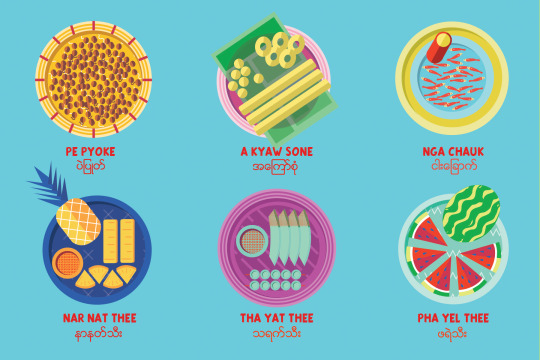



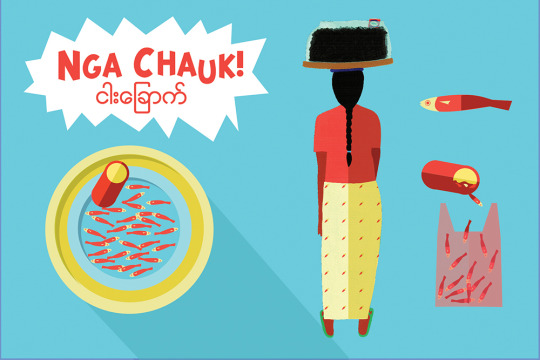
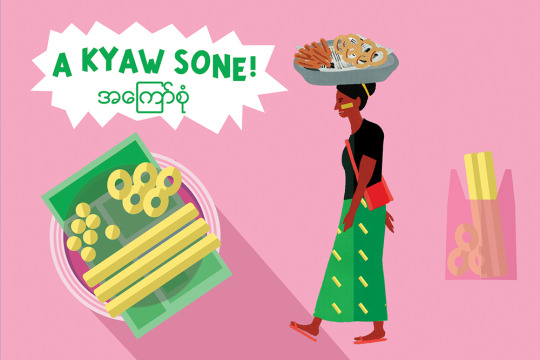
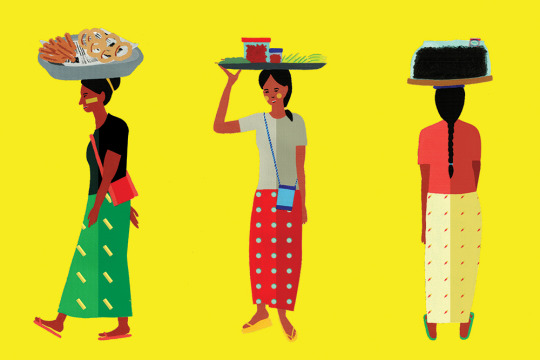

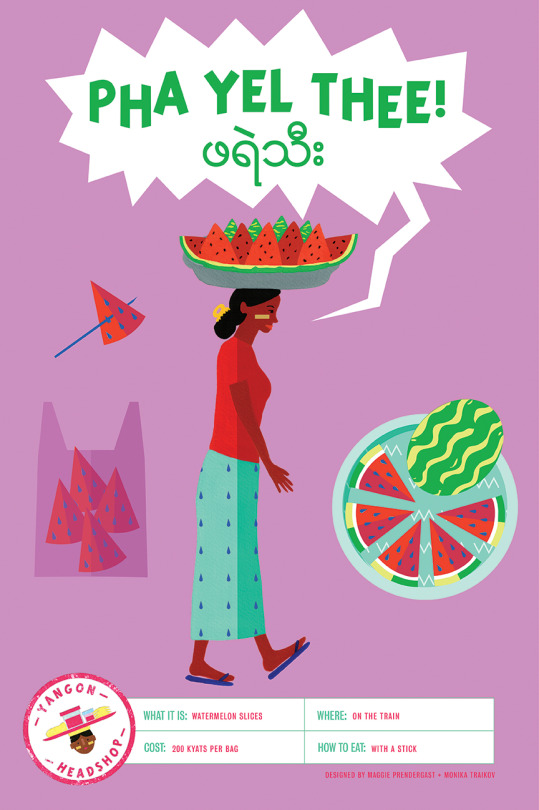
Pineapple! Steamed Beans! Green Mango! Pineapple! Watermelon! Fried Dough! All can be purchased from atop the head! For many of us, living in Yangon means being awoken by the shouts of a woman selling these items balancing on the top of her head. This series, designed by Monika Traikov and Maggie Prendergast, involved taking photographs of various women around Yangon who sell from their head, and documenting them through painting and graphic design. The project aimed to celebrate the women who tireless walk around the city with their delicious products.
#monikatraikov#maggieprendergast#yangon#myanmar#design#illustration#women#womenofgraphicdesign#watermelon#pineapple#beans#fish#streetfood#infographic#paint
5 notes
·
View notes
Photo

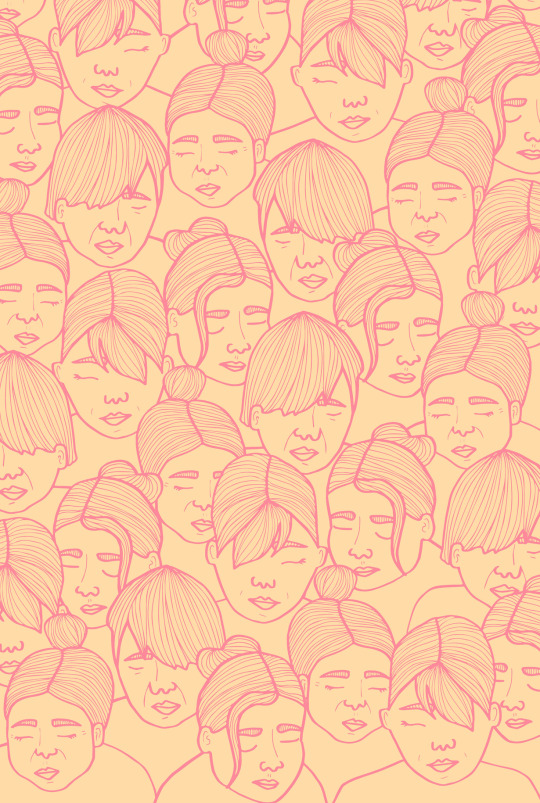
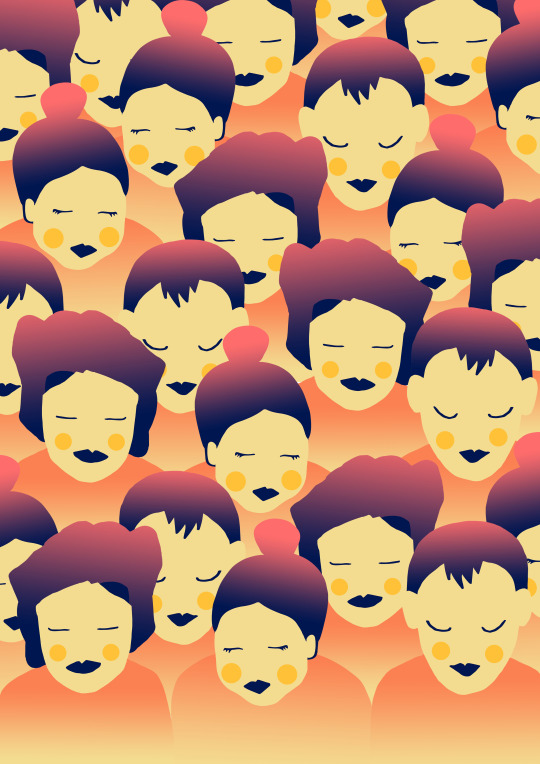
Being among crowds is a daily part of urban life in Yangon, so much so that we often rush around without taking a look at the people we pass on a daily basis. It’s often said that the people are what bring a city to life. This of course, is no different in our city. With such a large mix of ethnicities, cultures and languages, it is no surprise that the each person on the street has different emotions, and stories to share.
This week, we stopped and looked at the crowds, and tried to capture what it means to be an individual as part of a crowd in the city.
2 notes
·
View notes
Photo

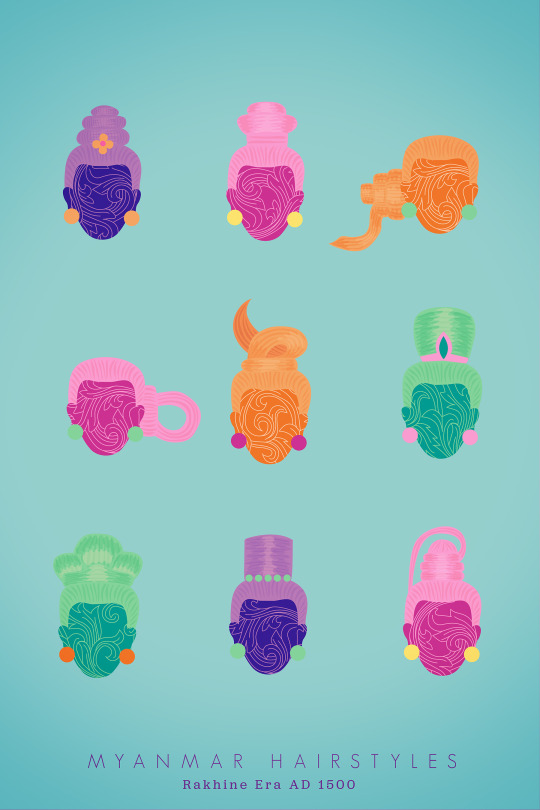
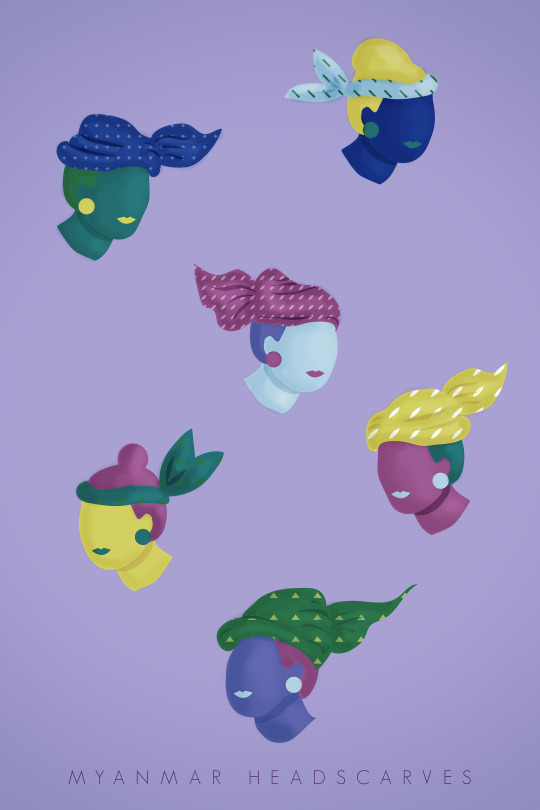
This week we looked into the history of hairstyles in Myanmar, and are highlighting the beauty of Myanmar women. Throughout history, people have worn their hair in a wide variety of styles, largely determined by the fashions of the culture. Since AD 100, women of Myanmar have cultivated their own unique hair styles. The hair was often elaborately and carefully dressed in special ways, some techniques are still even seen in contemporary Myanmar.
The hair knot was a popular style seen throughout 800 - 1300. Women often wore a decorative band of fabric along the forehead, as well as tight bracelets around the arm.
Scarves wrapped around the head and neck are a prominent accessory for both men and women. They are worn as a covering item, to protect against the elements, but are also worn as a fashion statement. There are many different traditional ways to tie a scarf around the head.
We can see some adaptations of these historical styles today on the streets of Yangon. Women today still wear their hair tied in knots with a strong of pearls of jasmine wrapped around it.
5 notes
·
View notes
Photo

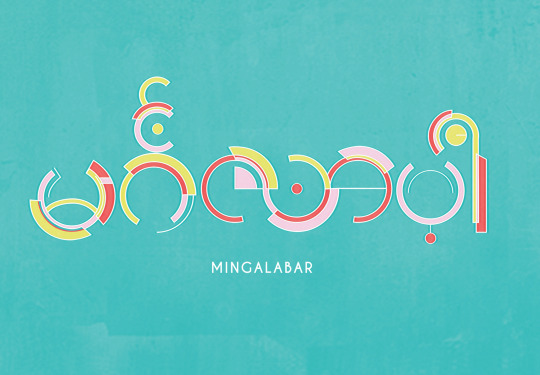
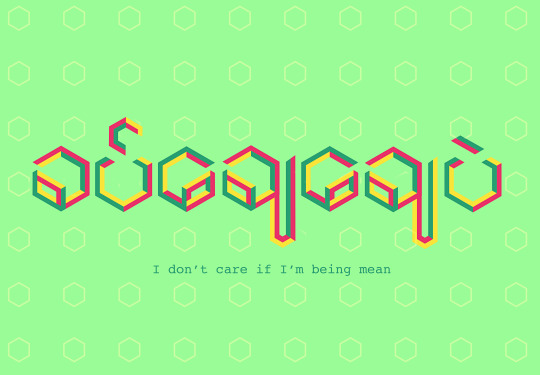

What is slang? It's an informal language that is mostly used in verbal speech such as conversations or in instant messenger applications.
It's no surprise to why people use slang. It's hip and fun! The message gets across so much faster. The downside? It can be misinterpreted and people might get offended. DO NOT use slangs in formal scenarios, or where every word you speak matters.
Here are some of of the slang words that we hear it everyday at NEX. Yup, that's right! That's how hip we are. 'Khat Gaw Gaw Pal'.
1. Khat Gaw Gaw Pal (YOLO)
2. Khat Chay Chay Pal (I don't care if I'm being mean)
3. Lar Gone Ma Sin Nae (Don't be such a cheapo)
We've also included "Mingalabar", or "Hello", it may not be a slang word, but it is something that everyone in Yangon, foreigner or local, is familiar with.
2 notes
·
View notes
Photo

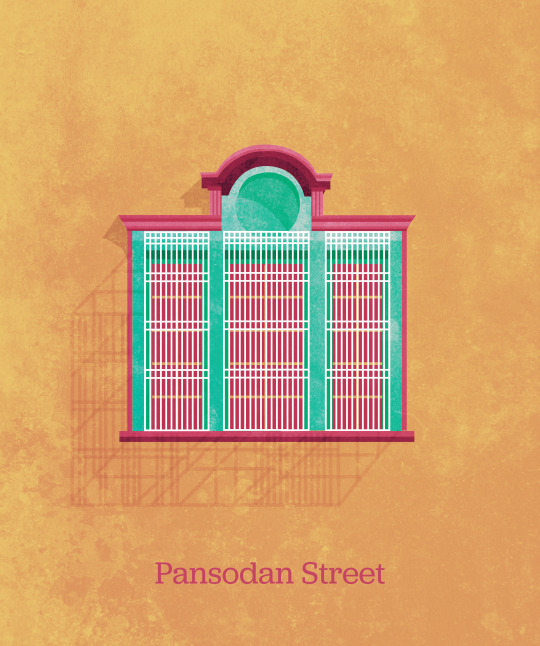

We often find the most character of a building in the small details, such as windows or doors. There is no exception in Yangon, where walking around the city provides us with a visual array of details on buildings. Everything from beautiful moulding and floral details to cast iron sculptures. This week we wanted to highlight the smallest of details that are often overlooked in the city.
What street has your favourite windows or doors?
4 notes
·
View notes
Photo
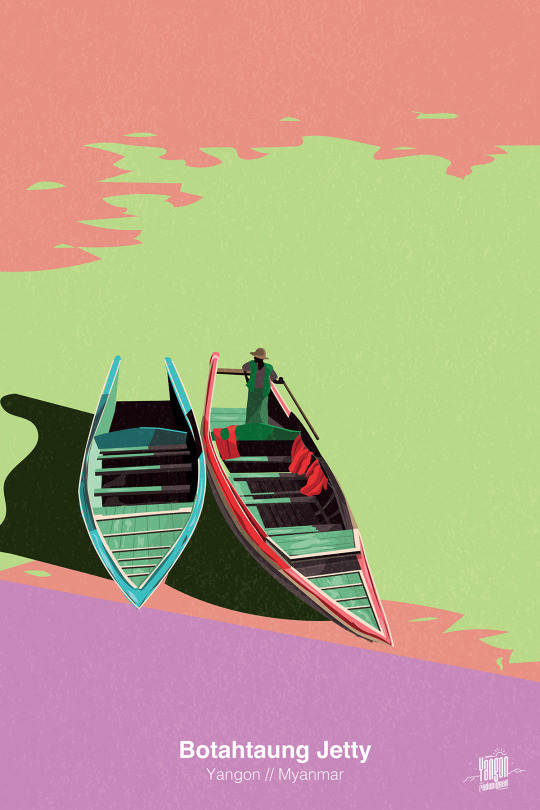


This week we are graphically celebrating some of our favourite tourist locations in Myanmar. After all, the holidays are right around the corner!
Our first location is very close to home, the Botahtaung Jetty in Yangon. It’s an amazing jetty, perfect for watching the sunset, while seeing colourful ferry boats pull into the harbour.
Ngwesaung beach is an amazing beach getaway, with perfect white sand, sun, and swaying palm trees. This hot spot is an amazing place for relaxation while sipping on a fresh coconut.
Our last spot is one of Myanmars’ favourite tourist destinations, the ancient city of Bagan. Although we did not specifically feature any of the famous temples, we love Bagan because of it’s peaceful atmosphere.
Let us know which of your favourite spots you would like to see us redesign!
4 notes
·
View notes
Photo

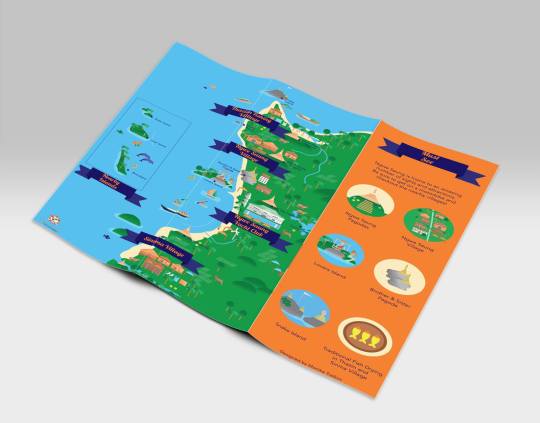
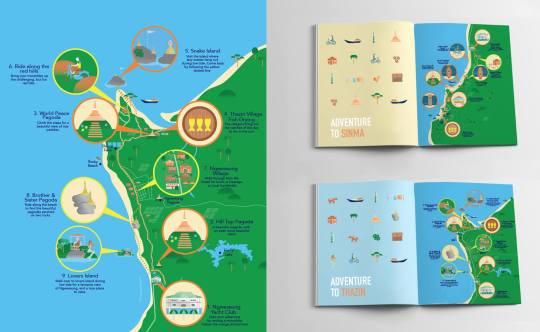
Yangon Redesigned worked with Ngwe Saung Yacht Club & Resort to make a series of maps that highlight all the awesome tourist attractions in and around the area. The beach is a perfect weekend - or week getaway from Yangon. Stretch out your legs and relax on the perfect white sands, or grab a snorkel, motorbike, or sailboat for a more active holiday!
NgweSaung is known for it’s laid back atmosphere, and it's beautiful stretch of white sand that goes for miles. The nearby fishing villages Sinma, and Thazin are definitely worth a visit. Hop on a motorbike, from the Yacht club, grab a map, and get exploring! Make sure to go with a hungry stomach, as the fresh seafood is like none other in Myanmar.
1 note
·
View note
Photo
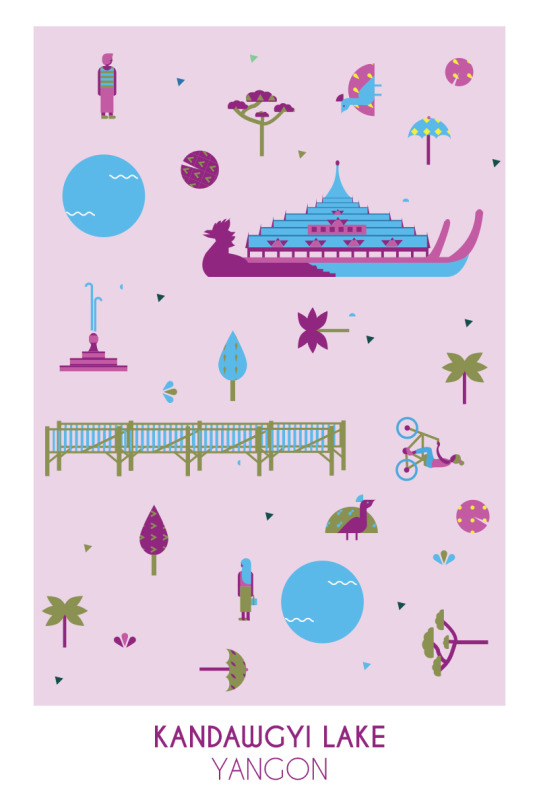
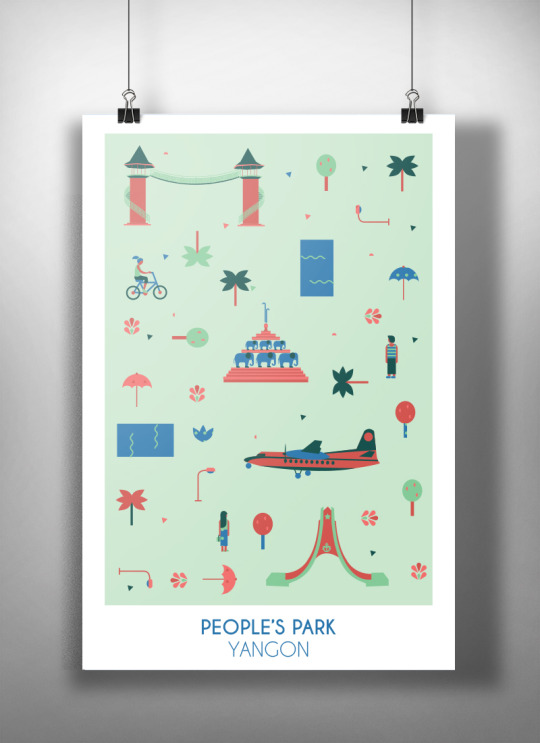
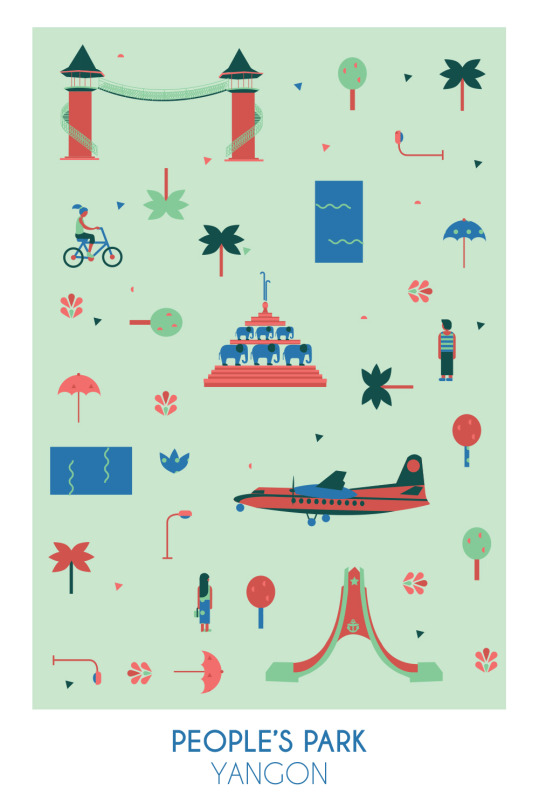
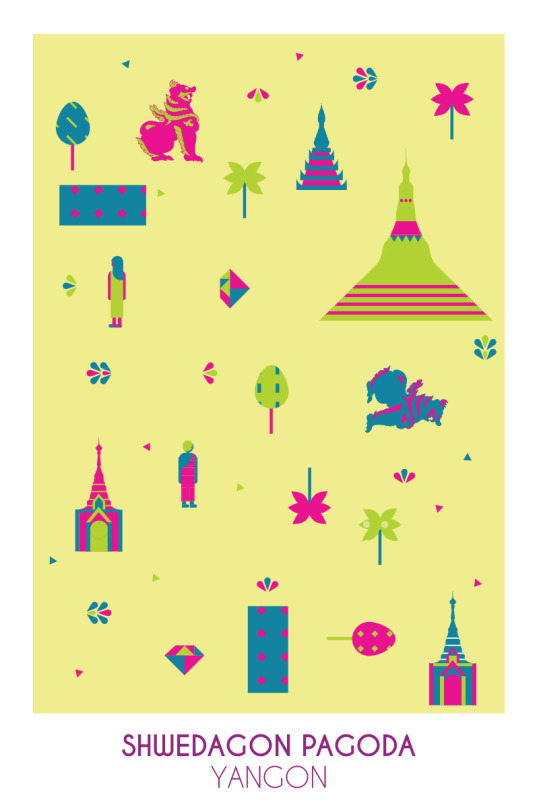
Looking to get away from the chaos that is downtown Yangon without having to actually leave the city itself? Here our some of our favorite places to do just that.
Shwedagon Pagoda, also knows as the Golden Pagoda is one of Buddhism’s most sacred sites, and one of the must-see places when visiting Yangon. The pagoda itself is adorned with gold leaf, diamonds and other gems. The grounds themselves house hundreds of colourful temples, stupas and statues, and the main pagoda, 99 meters high, can be seen from most places throughout the city.
People’s Park is located just west of the famous Shwedagon Pagoda. The area had been part of the palace grounds of Queen Shin Sawbu and later was repurposed to a golf course during colonial times. People’s Park is home to a bunch of interesting artefacts, a plane and a treehouse included. The park grounds are a great place to escape the hustle and bustle of the city.
A local favourite for a weekend picnic is the beautifully serene Kandawgyi Lake. Along the shore of the placid lake is the famous Karaweik, a replica of a Burmese royal barge. Kandawgyi Lake or “great royal lake”, is surrounded by a stunning Nature Park which is home to a variety of beautiful flora and fauna, and worth the trip on a lazy weekend.
11 notes
·
View notes
Photo
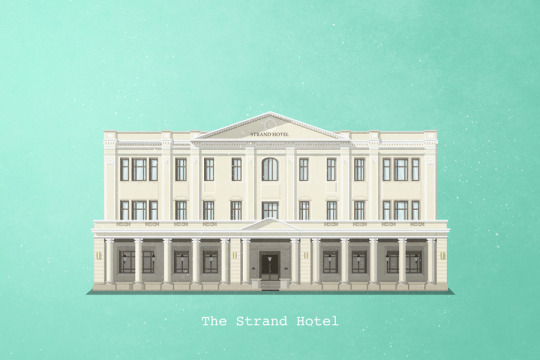


Yangon is home to the largest amount of surviving colonial architecture in all of South East Asia. These beautiful buildings full of history and life deserve to be preserved and celebrated.
This weekend the YCDC is hosting 3 exhibitions across down town. Some of our work, including these three illustrations, will be up for display at the YWCA on Bogalazay Street (middle block).
The general theme for this weekends events is preservation and celebration of Yangon’s many heritage buildings. Please come down on Saturday and Sunday to have a look and make sure to check out the other exhibitions as well!
Strand -
The Strand Hotel opened in 1901 and is Myanmar’s oldest surviving hotel. It is in fact one of the most famous hotels in the world, and was owned and operated by the Sarkies Brothers who were well known hoteliers at the time.
Port Authority -
The Myanmar Port Authority was constructed in 1928 and was designed by architect Thomas Oliphant Foster. The instantly recognizable building stands as a key element of the riverside cityscape.
City Hall -
The City Hall located in the center of down town Yangon was built between 1925-1940. It was the first building to combine European design and engineering technology with traditional Myanmar flourishes making it quite unique in its appearance.
4 notes
·
View notes
Photo

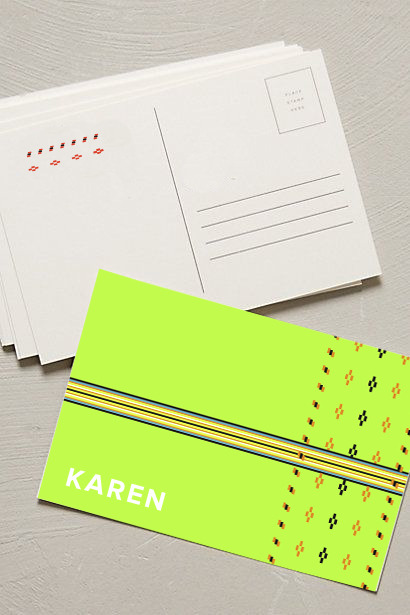
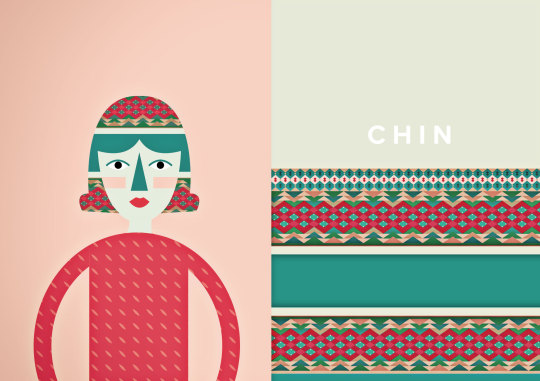
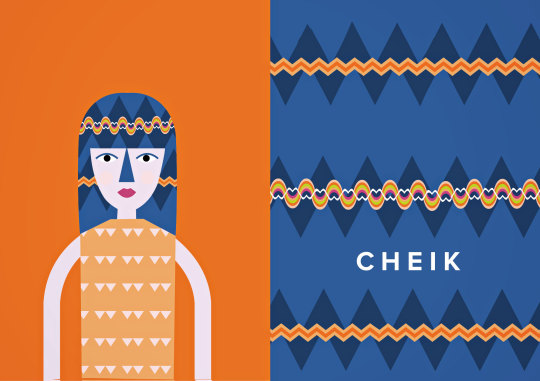
We have taken our favourite designs from different regions around Myanmar, and given them a fresh look as postcards!
One of the oldest, and most favored textile designs of Myanmar is the Cheik (over-hundred-shuttle acheik) design. This design is said to have originated near Inle Lake, and is favourited by women around the country.
The design is often made with vibrant, eye catching colours that seem to move with the wearer as they walk. The weaving takes days, if not weeks, and is something truly unique to Myanmar.
Textiles are not only worn by women, but men also sport unique patterns. The one that we chose originates from Rahkine state. Identified by it’s diamond shape pattern.
The third pattern that we chose is a womens' pattern unique to Chin state. It’s horizontal triangular and diamond shapes give the fabric its distinctive look.
The Karen people have many different traditional regarding dress. Costume is important, and they often use bold and bright colours to add detail to the textiles. The different fabrics have a variety of meanings, and the Karen ancestors wanted others to be able to recognize them by their weaving.
Kachin state textiles are usually identifiable by the dominant zigzag patterns. They are frequently seen in contemporary Kachin textiles, where the bold use of colour help to differentiate the regional textiles.
Get ready for our postcards to hit a studio near you!
6 notes
·
View notes
Photo

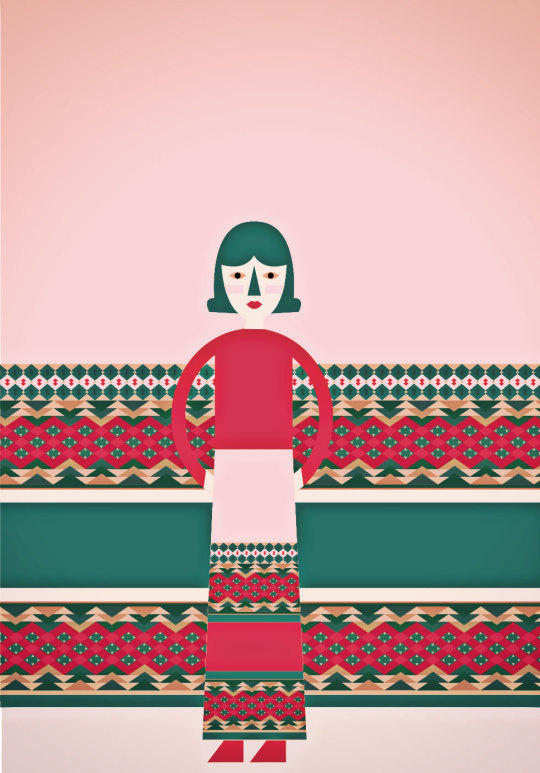

We have taken three of our favourite designs from different regions around Myanmar, and given them a fresh look.
One of the oldest, and most favored textile designs of Myanmar is the Cheik (over-hundred-shuttle acheik) design. This design is said to have originated near Inle Lake, and is favourited by women around the country.
The design is often made with vibrant, eye catching colours that seem to move with the wearer as they walk. The weaving takes days, if not weeks, and is something truly unique to Myanmar.
Textiles are not only worn by women, but men also sport unique patterns. The one that we chose originates from Rahkine state. Identified by it’s diamond shape pattern.
The third pattern that we chose is a womens' pattern unique to Chin state. It’s horizontal triangular and diamond shapes give the fabric its distinctive look.
0 notes
Photo
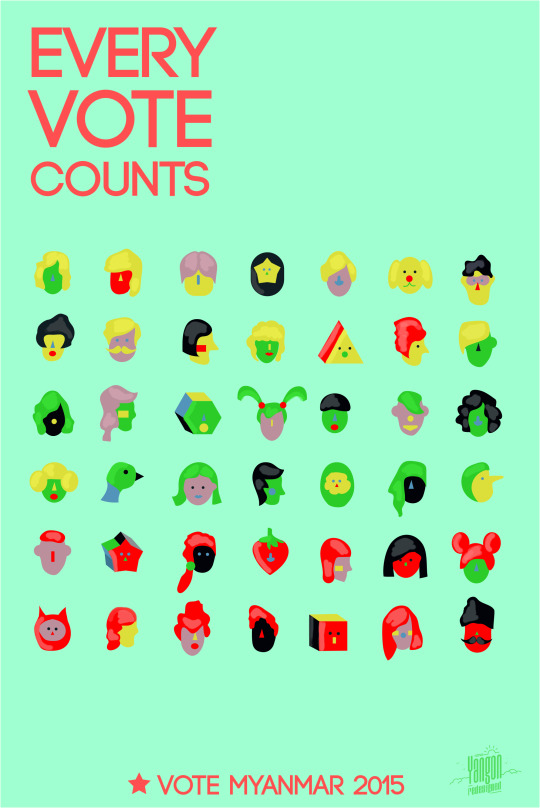
Get ready Myanmar, the election is only 3 days away!
Just one single vote has the power to make a difference, it adds up. Every vote does count! Use your voice!
2 notes
·
View notes
Photo

The Myanmar general elections are only 10 days away!
Your vote is your voice. This is your chance to have a say in which parties will lead this country into the future. Your say in who will be making the essential decisions that affect us all. Each and every vote is essential.
No matter who you are voting for, use your voice, cast your ballot and be sure not to miss this opportunity to be heard.
Please remember to vote this November the 8th!
#VoteMyanmar2015
2 notes
·
View notes
Photo
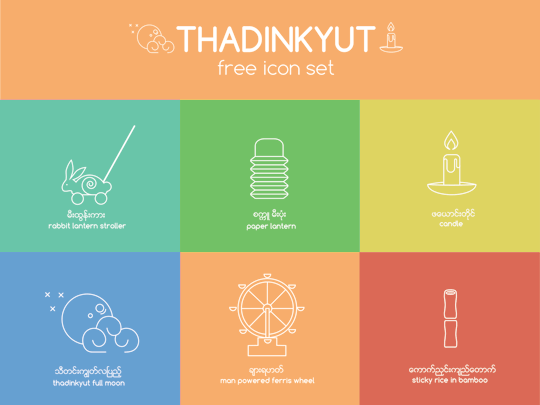
Celebrate the festival of lights with our free Thadinkyut icon set!
Download the .ai file here:
https://dribbble.com/shots/2313620-Thandinkyut
Thadingyut, also known as the festival of lights, is a celebration welcoming the Buddha’s decent from heaven. People celebrate by lighting lanterns and candles, and going to pagodas and monasteries to pay respect to monks.
This year, the festival is held on October 28th, on the full moon day of the Burmese Lunar month of Thadinkyut. The festival lasts for three days, where many stalls pop up on the streets. Make sure you head downtown with an empty stomach, as there will be a lot delicious street food! Keep your eyes our for our favourite, Kout Nyin Kyi Taut, which is sweet sticky rice in a bamboo tube. Children often push around a toy “Mee Tun Car" with a glowing candle inside.
Don’t miss out on taking a ride on the ferris wheels, definitely a unique Myanmar festival experience not to miss!
3 notes
·
View notes
Photo
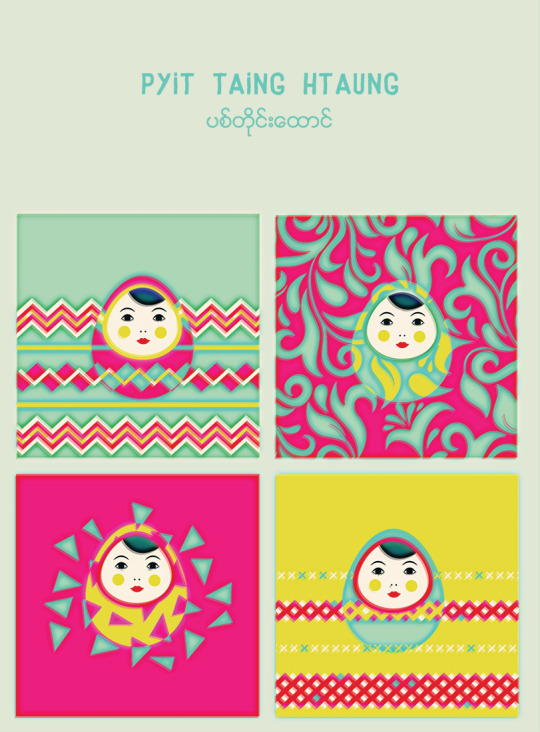


One of the classic Myanmar toys is the Pyit Taing Htaug. An egg shaped figure which can't be knocked down. It often has a face painted on it to give it personality and life. The literal translation is "that which always rights itself when thrown down." We think everyone can all learn a lesson from the Pyit Tang Htaung, always get back up!
The Zee Kwet or the Myanmar Owls are a symbol of luck and prosperity for families. The owls are always kept in pairs, representing a male and a female, with a small owl painted on the female to represent a child.
The bull, or Nwar Yote, is made from paper-mache, a traditional material for ornaments and toys. Although they are no longer played with by many children in urban areas, they are often placed on pagodas or kept at home.
Phoe Wa Yote, represents an exaggerated version of a young happy and healthy boy. He is often identified by his unique hairstyle, smiling face with rosy cheeks.
#myanmar#toy#graphicdesign#doll#design#art#pattern#egg#pyittainghtaung#zeekwet#owl#nwaryote#phoewayote#bull
0 notes
Photo
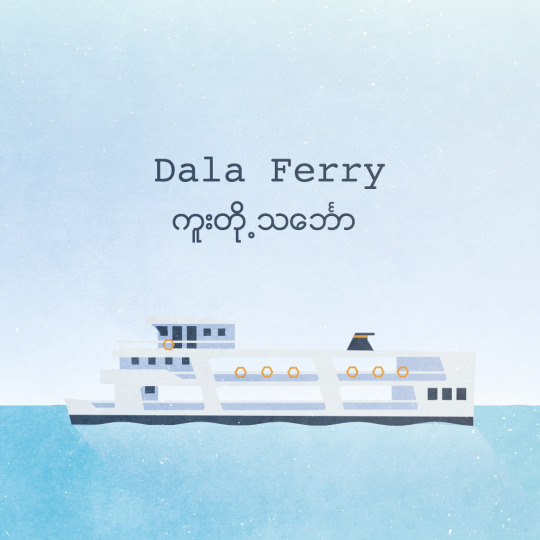
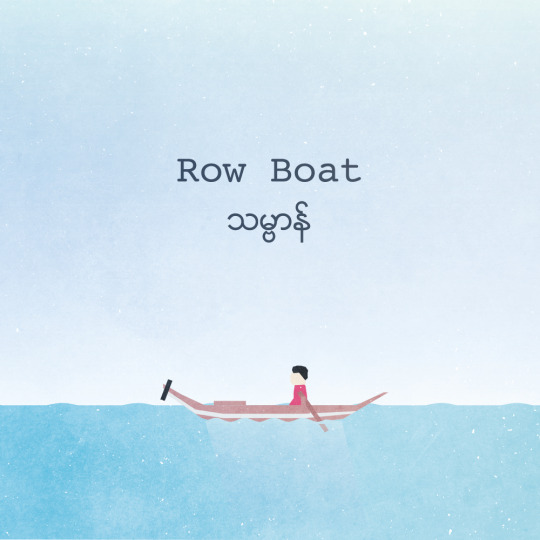

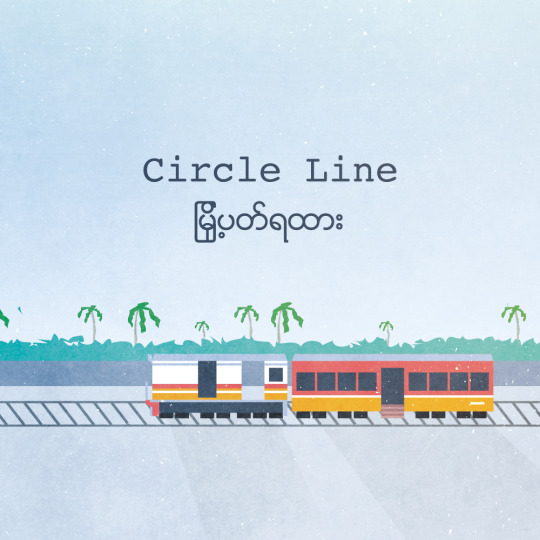
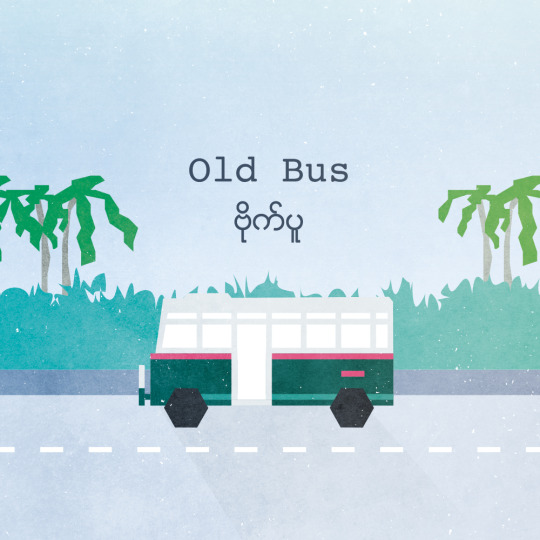
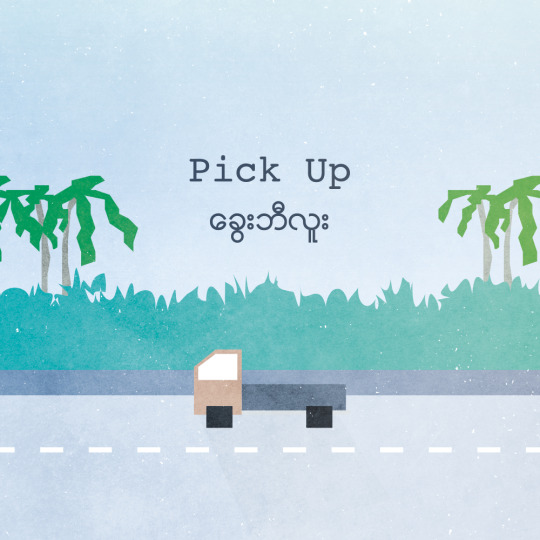

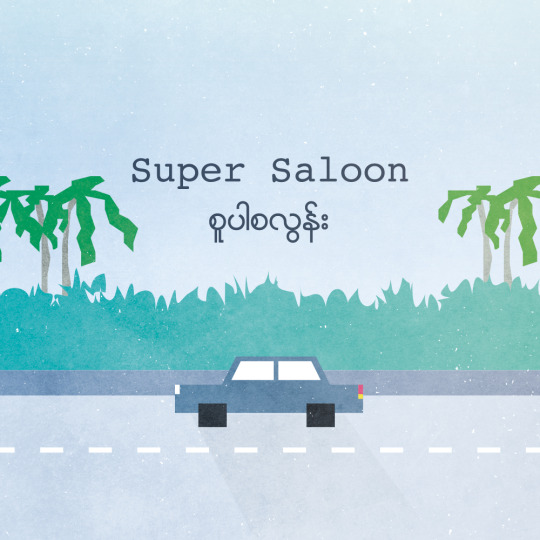
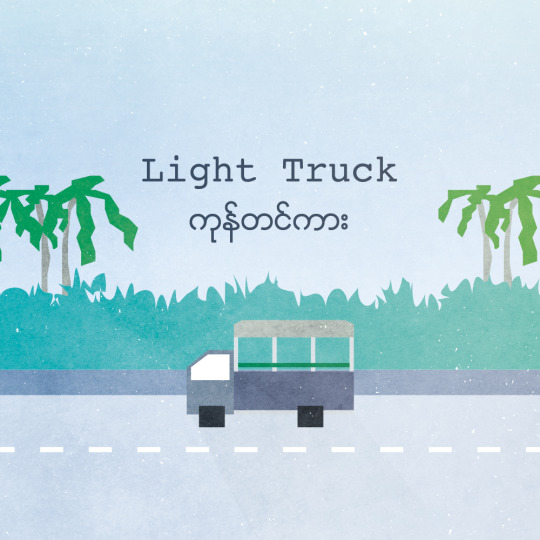
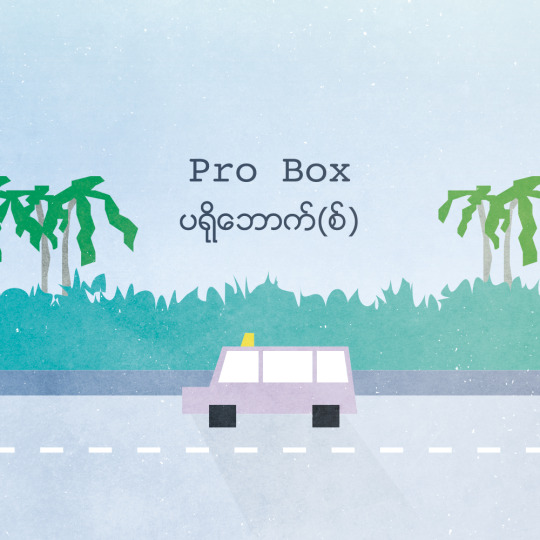
Yangon traffic might be in need of a serious redesign, but for now enjoy these fun illustrations of some of the different ways to make it around town! Did we miss any?
0 notes
Photo

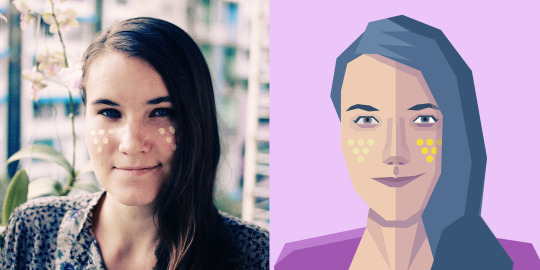

Like Mohinga, and tea shops, thanaka is something that represents the essence of Myanmar.
Thanaka not only provides benefits for the skin and protection from the sun, but it is also a statement of style and design. It is applied with a brush or your fingers, and for some, it is worn on a daily basis.
Here at Yangon Redesigned, we celebrate the endless possibilities of designs and patterns which are a great way to show some personal flair.
Now we want to know… How do you wear your thanaka?
2 notes
·
View notes